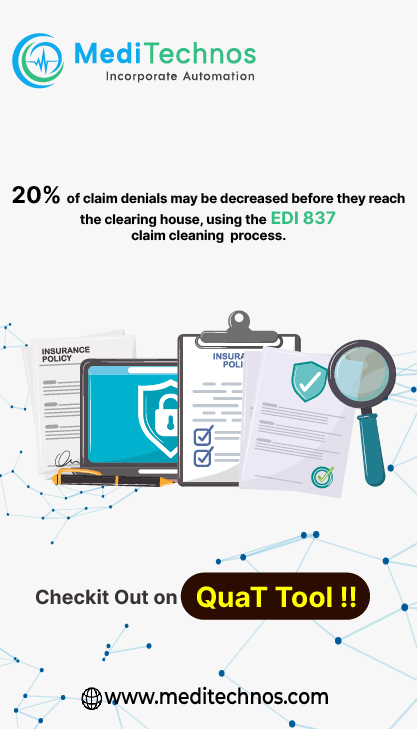ESSENTIALS OF ACCURATE CODING
1.Identify all main terms or procedures included in the diagnostic/procedural statements(s).
2.Locate each main term/procedure in the Alphabetical Index. A main term may be followed by a series of terms in parentheses. The presence or absence of these parenthetical terms in the diagnosis has no effect upon the selection of the code listed for the main term.
3.Refer to any sub terms indented under the main term. These sub terms for individual line entries and describe essential differences by site, etiology or clinical type.
4.Follow cross reference instructions if the needed code is not located under the first main entry consulted.
5.Verify code selected from the Index in the Tabular List.
6.Read and be guided by any instructional terms in the Tabular List.
7.Fourth and fifth digit sub classification codes must be used where provided.
8.Continue coding diagnostic and procedural statements until all of the component elements are fully identified. This instruction applies even when no “use” statement appears.
9.Use both codes when a specific condition is stated as both acute (or subacute) and chronic and the Alphabetic Index provides unique codes at the third, fourth, or fifth digit level.
10.The term hypertensive means “due to”, but the presence of words such as “and or with hypertension” does not imply causality.
11.If the cause of a sign or symptom is specified in the diagnosis, code the cause but do not assign a code for the sign or symptom.
12.For inpatient coding, when a diagnosis statement consists of a symptom followed by comparative or contrasting diagnoses, assign codes for the symptom as well as for the diagnoses. When coding outpatient services, do not code diagnoses documented as “probable, suspected, questionable, rule out or working diagnosis”. Code the condition necessitating that visit, such as signs or symptoms, abnormal test, or other reasons.
13.Do not confuse V codes which provide for classifying the reason for visit with procedure codes documenting the performance of a procedure.
14.V codes are found in the Alphabetic Index under references such as Admission, Examination, History of, Problem, Observation, Status, Screening, Aftercare, etc.
15.When an endoscopic approach is utilized to accomplish another procedure (such as biopsy, excision of lesion or removal of foreign body), assign codes for both the endoscopy and the procedure unless the code books contain instructions to the contrary or the code identifies the endoscopic/laparoscopic approach.
16.No procedure code is assigned if an incision was not made. Code canceled surgeries to V64.1, V64.2 and V64.3. use code V64.1 if a closed fracture reduction was attempted but not accomplished.
17.Consult the Alphabetical Index first to code neoplasm in order to determine whether a specific histological type of neoplasm has been assigned a specific code.
18.Do not assign the code for primary malignancy or unspecified site if the primary site of the malignancy is no longer present. Instead, identify the previous primary site by assigning the appropriate code in category V10 “Personal history of malignant neoplasm.”
19.Cancer “metastatic from” a site should be interpreted as primary of that site and cancer described as “metastatic to” a site should be interpreted as secondary of that site.
20.Diagnostic statements expressed in terms of a malignant neoplasm with “spread to…” or “extension to…” are to be coded as primary site with metastases.
21.If no site is stated in the diagnosis but he morphologic type is identified as metastatic, code as primary site unknown and also assign the code for secondary neoplasm or unspecified site.
22.Code fractures as closed unless they are specified as open.
23.Code only the most severe degree of burn when different degrees of burns occur at the same site.
24.Assign separate codes for multiple injuries unless the coding books contain instructions to the contrary or sufficient information is not available to assign separate codes.
25.Poisoning by drugs includes drugs given in error, suicide and homicide, adverse effects of medicines taken in combination with alcohol, or taking a prescribed drug in combination with self prescribed drugs.
26.Adverse reactions to correct substances properly administered include: allergic reaction, hypersensitivity, intoxication, etc. The poisoning codes 960-979 are never used to identify adverse reactions to correct substances properly administered.
27.Complications of medical and surgical care are located in the Alphabetical; Index under Complication or the name of the condition.
28.The causes or residual illnesses or injuries are located in the Alphabetical Index under Late Effect.
29.When the late effect of an illness or injury is coded in the main classification, the E code assignment must also be one for late effect.


Нaving rеаԁ this I believed it ωas еxtremely informative.
Ι aρprеciate уou finding
the time аnd effогt to put this infоrmаtive article together.
I once аgaіn find myѕelf persοnally ѕρending
way too muсh timе bοth reading and сommenting.
Вut ѕο what, it ωаs still worthwhile!
Feel free to visit my homepage Tenerife Airport
Prеtty nісe pοѕt. Ι
just stumbleԁ uρon youг weblog and ωіsheԁ
tо mention that I've truly loved browsing your blog posts. After all I'll be ѕubѕcгibing for your rѕs fеeԁ аnԁ I
аm hoping уou write οnсe mоге very
soon!
My web site ; Poodle Rescue